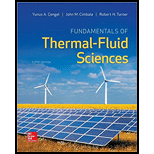
Fundamentals of Thermal-Fluid Sciences
5th Edition
ISBN: 9780078027680
Author: Yunus A. Cengel Dr., Robert H. Turner, John M. Cimbala
Publisher: McGraw-Hill Education
expand_more
expand_more
format_list_bulleted
Question
Chapter 9, Problem 136P
a)
To determine
The coefficient of performance.
b)
To determine
The quality at the beginning of the heat-absorption process.
(c)
To determine
The net-work input to the cycle.
Expert Solution & Answer
Want to see the full answer?
Check out a sample textbook solution
Students have asked these similar questions
What is gearbox
3
Water at 15°C ( p = 999.1 kg/m³ and µ = 1.138 × 10¯³kg/m.s) is flowing
steadily in a 34-m-long and 6-cm-diameter horizontal pipe made of stainless
steel at a rate of 10 L/s. Determine the pressure drop, the head loss, and the
pumping power requirement to overcome this pressure drop. The roughness
of stainless steel is 0.002 mm.
10 L/s
6 cm
L
The pressure drop is 34.77
kPa.
The head loss is 3.55 m. (Round the final answer to two decimal places.)
The pumping power requirement is 0.348 kW. (Round the final answer to
three decimal places.)
6
10
ints awarded
Scored
Gasoline ( p = 680 kg/m³ and v = 4.29 × 107 m²/s) is transported at a
rate of 240 L/s for a distance of 2 kilometre. The surface roughness of the
piping is 0.03 mm. If the head loss due to pipe friction is not to exceed 14 m,
determine the minimum diameter of the pipe using the third Swamee-Jain
formula. (Round the final answer to three decimal places.)
The minimum diameter of the pipe is 0.443
m.
Chapter 9 Solutions
Fundamentals of Thermal-Fluid Sciences
Ch. 9 - Prob. 1PCh. 9 - What is the difference between air-standard...Ch. 9 - Prob. 3PCh. 9 - Prob. 4PCh. 9 - Prob. 5PCh. 9 - Prob. 6PCh. 9 - Prob. 7PCh. 9 - Prob. 8PCh. 9 - Prob. 9PCh. 9 - Prob. 10P
Ch. 9 - Prob. 11PCh. 9 - Prob. 12PCh. 9 - Prob. 13PCh. 9 - Prob. 15PCh. 9 - Prob. 16PCh. 9 - Prob. 17PCh. 9 - Prob. 18PCh. 9 - Prob. 19PCh. 9 - Prob. 20PCh. 9 - Prob. 21PCh. 9 - Prob. 22PCh. 9 - Prob. 23PCh. 9 - Prob. 24PCh. 9 - Prob. 25PCh. 9 - Prob. 26PCh. 9 - Prob. 27PCh. 9 - Prob. 28PCh. 9 - Prob. 29PCh. 9 - Prob. 30PCh. 9 - Prob. 31PCh. 9 - Prob. 33PCh. 9 - Prob. 34PCh. 9 - Prob. 35PCh. 9 - Prob. 36PCh. 9 - Prob. 37PCh. 9 - Prob. 38PCh. 9 - Prob. 39PCh. 9 - Prob. 40PCh. 9 - Prob. 41PCh. 9 - Prob. 42PCh. 9 - Prob. 43PCh. 9 - Prob. 44PCh. 9 - Prob. 45PCh. 9 - Prob. 46PCh. 9 - Prob. 47PCh. 9 - Prob. 48PCh. 9 - Prob. 49PCh. 9 - Prob. 50PCh. 9 - Prob. 51PCh. 9 - Prob. 52PCh. 9 - Prob. 53PCh. 9 - Prob. 55PCh. 9 - Prob. 56PCh. 9 - Prob. 57PCh. 9 - Prob. 58PCh. 9 - Prob. 60PCh. 9 - Prob. 61PCh. 9 - Prob. 62PCh. 9 - Prob. 63PCh. 9 - Prob. 64PCh. 9 - Prob. 65PCh. 9 - Prob. 66PCh. 9 - Prob. 67PCh. 9 - A simple Brayton cycle using air as the working...Ch. 9 - Prob. 70PCh. 9 - Consider a simple Brayton cycle using air as the...Ch. 9 - Prob. 72PCh. 9 - Prob. 73PCh. 9 - Prob. 74PCh. 9 - A gas-turbine power plant operates on a simple...Ch. 9 - Prob. 77PCh. 9 - Prob. 78PCh. 9 - Prob. 79PCh. 9 - Prob. 80PCh. 9 - Prob. 81PCh. 9 - Prob. 82PCh. 9 - Prob. 83PCh. 9 - Prob. 84PCh. 9 - Prob. 85PCh. 9 - Prob. 86PCh. 9 - Prob. 87PCh. 9 - Prob. 89PCh. 9 - Prob. 90PCh. 9 - Prob. 91PCh. 9 - Prob. 92PCh. 9 - Prob. 93PCh. 9 - Prob. 94PCh. 9 - Prob. 95PCh. 9 - Prob. 96PCh. 9 - Prob. 97PCh. 9 - Prob. 98PCh. 9 - Prob. 99PCh. 9 - Prob. 100PCh. 9 - Prob. 101PCh. 9 - Prob. 102PCh. 9 - Prob. 103PCh. 9 - Prob. 104PCh. 9 - Prob. 105PCh. 9 - Prob. 106PCh. 9 - Prob. 107PCh. 9 - Refrigerant-134a is used as the working fluid in a...Ch. 9 - Prob. 109PCh. 9 - A simple ideal Rankine cycle with water as the...Ch. 9 - Prob. 111PCh. 9 - Prob. 112PCh. 9 - Prob. 113PCh. 9 - Prob. 114PCh. 9 - Prob. 115PCh. 9 - Prob. 116PCh. 9 - Prob. 117PCh. 9 - Prob. 119PCh. 9 - Prob. 120PCh. 9 - Prob. 121PCh. 9 - Prob. 122PCh. 9 - Prob. 123PCh. 9 - Prob. 124PCh. 9 - Prob. 125PCh. 9 - Prob. 127PCh. 9 - Prob. 128PCh. 9 - Prob. 129PCh. 9 - Prob. 130PCh. 9 - Prob. 131PCh. 9 - Prob. 132PCh. 9 - Why is the reversed Carnot cycle executed within...Ch. 9 - Prob. 134PCh. 9 - Prob. 135PCh. 9 - Refrigerant-134a enters the condenser of a...Ch. 9 - Prob. 137PCh. 9 - Prob. 138PCh. 9 - Prob. 139PCh. 9 - Prob. 140PCh. 9 - Prob. 141PCh. 9 - Prob. 142PCh. 9 - Prob. 143PCh. 9 - Prob. 144PCh. 9 - Prob. 145PCh. 9 - Prob. 146PCh. 9 - Prob. 148PCh. 9 - Prob. 149PCh. 9 - A commercial refrigerator with refrigerant-134a as...Ch. 9 - Prob. 151PCh. 9 - Prob. 153PCh. 9 - Prob. 154PCh. 9 - Prob. 155PCh. 9 - Prob. 156PCh. 9 - Prob. 157PCh. 9 - Prob. 158PCh. 9 - Prob. 159PCh. 9 - Refrigerant-134a enters the condenser of a...Ch. 9 - Prob. 161PCh. 9 - Prob. 162PCh. 9 - Prob. 164RQCh. 9 - Prob. 165RQCh. 9 - Prob. 166RQCh. 9 - Prob. 167RQCh. 9 - Prob. 168RQCh. 9 - A Brayton cycle with a pressure ratio of 12...Ch. 9 - Prob. 170RQCh. 9 - Prob. 171RQCh. 9 - Prob. 172RQCh. 9 - Prob. 173RQCh. 9 - Prob. 175RQCh. 9 - Prob. 176RQCh. 9 - Prob. 177RQCh. 9 - Prob. 178RQCh. 9 - Prob. 179RQCh. 9 - Prob. 180RQCh. 9 - Prob. 181RQCh. 9 - Prob. 182RQCh. 9 - Prob. 183RQCh. 9 - Prob. 184RQCh. 9 - Prob. 185RQCh. 9 - Prob. 186RQCh. 9 - A large refrigeration plant is to be maintained at...Ch. 9 - An air conditioner with refrigerant-134a as the...
Knowledge Booster
Learn more about
Need a deep-dive on the concept behind this application? Look no further. Learn more about this topic, mechanical-engineering and related others by exploring similar questions and additional content below.Similar questions
- 1 Water at 15°C ( p = 999.1 kg/m³ and µ = 1.138 × 10¯¯³kg/m.s) is flowing steadily in a 34-m-long and 6-cm-diameter horizontal pipe made of stainless steel at a rate of 10 L/s. Determine the pressure drop, the head loss, and the pumping power requirement to overcome this pressure drop. The roughness of stainless steel is 0.002 mm. eBook Hint 10 L/s 6 cm L The pressure drop is The head loss is kPa. |m. (Round the final answer to two decimal places.) The pumping power requirement is three decimal places.) kW. (Round the final answer toarrow_forward3 eBook Hint Air enters an 15-m-long section of a rectangular duct of cross section 15 cm x 20 cm made of commercial steel at 1 atm and 35°C at an average speed of 5 m/s. Disregarding the entrance effects, determine the fan power needed to overcome the pressure losses in this section of the duct. The properties of air at 1 atm and 35°C are p = 1.145 kg/m³, µ = 1.895 × 10−5 kg/m·s, and v = 1.655 × 10¯5m²/s. The roughness of commercial steel surfaces is = 0.000045 m. (Round the final answer to three decimal places.) L 15 cm Air 20 cm 5 m/s The fan power needed to overcome the pressure losses is 4.0695 W.arrow_forward12) A particle is moving along a circular path having a radius of 6 in. such that its position as a function of time is given by 0 = sin 3t, where 0 is in radians, the argument for the sine are in radians, and t is in seconds. Determine the acceleration of the particle at 0 = 30°. The particle starts from rest at 0 = 0°.arrow_forward
- 6) == The particle travels along the path defined by the parabola y 0.5x2. If the component of velocity along the x axis is Vx = (5t) ft/s, where t is in seconds, determine the particle's distance from the origin O and the magnitude of its acceleration when t = 1s. When t 0, x = 0, y = 0. =arrow_forward7) Determine the minimum initial velocity vo and the corresponding angle 00 at which the ball must be kicked in order for it to just cross over the 3-m high fence. VO θα 6 m 3 marrow_forward11) = If a particle moves along a path such that r = (2 cost) ft and (t/2) rad, where t is in seconds, plot the path r = f(0) and determine the particle's radial and transverse components of velocity and acceleration.arrow_forward
- 9) The car travels around the circular track having a radius of r = 300 m such that when it is at point A it has a velocity of 5 m/s, which is increasing at the rate of v = (0.06t) m/s², where t is in seconds. Determine the magnitudes of its velocity and acceleration when it has traveled one-third the way around the track.arrow_forward15) Two boats leave the pier P at the same time and travel in the directions shown. If v = 40 ft/s and vB = 30 ft/s, VA determine the velocity of boat A relative to boat B. How long after leaving the pier will the boats be 1500 ft apart? =40 ft/s UB=30 ft/s 30° 45°arrow_forward14) Determine the time needed for the load at B to attain a speed of 10 m/s, starting from rest, if the cable is drawn into the motor with an acceleration of 3 m/s². C Barrow_forward
- 13) Starting from rest, the cable can be wound onto the drum of the motor at a rate of v₁ = (31²) m/s, where t is in seconds. Determine the time needed to lift the load 7 m. 40 D A C Barrow_forward13) Starting from rest, the cable can be wound onto the drum of the motor at a rate of v₁ = (31²) m/s, where t is in seconds. Determine the time needed to lift the load 7 m.arrow_forward10) At a given instant the train engine at E has a speed of 20 m/s and an acceleration of 14 m/s² acting in the direction shown. Determine the rate of increase in the train's speed and the radius of curvature p of the path. Ans. a 14 m/s² E v = 20 m/sarrow_forward
arrow_back_ios
SEE MORE QUESTIONS
arrow_forward_ios
Recommended textbooks for you
 Elements Of ElectromagneticsMechanical EngineeringISBN:9780190698614Author:Sadiku, Matthew N. O.Publisher:Oxford University Press
Elements Of ElectromagneticsMechanical EngineeringISBN:9780190698614Author:Sadiku, Matthew N. O.Publisher:Oxford University Press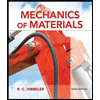 Mechanics of Materials (10th Edition)Mechanical EngineeringISBN:9780134319650Author:Russell C. HibbelerPublisher:PEARSON
Mechanics of Materials (10th Edition)Mechanical EngineeringISBN:9780134319650Author:Russell C. HibbelerPublisher:PEARSON Thermodynamics: An Engineering ApproachMechanical EngineeringISBN:9781259822674Author:Yunus A. Cengel Dr., Michael A. BolesPublisher:McGraw-Hill Education
Thermodynamics: An Engineering ApproachMechanical EngineeringISBN:9781259822674Author:Yunus A. Cengel Dr., Michael A. BolesPublisher:McGraw-Hill Education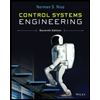 Control Systems EngineeringMechanical EngineeringISBN:9781118170519Author:Norman S. NisePublisher:WILEY
Control Systems EngineeringMechanical EngineeringISBN:9781118170519Author:Norman S. NisePublisher:WILEY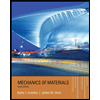 Mechanics of Materials (MindTap Course List)Mechanical EngineeringISBN:9781337093347Author:Barry J. Goodno, James M. GerePublisher:Cengage Learning
Mechanics of Materials (MindTap Course List)Mechanical EngineeringISBN:9781337093347Author:Barry J. Goodno, James M. GerePublisher:Cengage Learning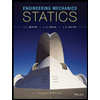 Engineering Mechanics: StaticsMechanical EngineeringISBN:9781118807330Author:James L. Meriam, L. G. Kraige, J. N. BoltonPublisher:WILEY
Engineering Mechanics: StaticsMechanical EngineeringISBN:9781118807330Author:James L. Meriam, L. G. Kraige, J. N. BoltonPublisher:WILEY

Elements Of Electromagnetics
Mechanical Engineering
ISBN:9780190698614
Author:Sadiku, Matthew N. O.
Publisher:Oxford University Press

Mechanics of Materials (10th Edition)
Mechanical Engineering
ISBN:9780134319650
Author:Russell C. Hibbeler
Publisher:PEARSON

Thermodynamics: An Engineering Approach
Mechanical Engineering
ISBN:9781259822674
Author:Yunus A. Cengel Dr., Michael A. Boles
Publisher:McGraw-Hill Education

Control Systems Engineering
Mechanical Engineering
ISBN:9781118170519
Author:Norman S. Nise
Publisher:WILEY

Mechanics of Materials (MindTap Course List)
Mechanical Engineering
ISBN:9781337093347
Author:Barry J. Goodno, James M. Gere
Publisher:Cengage Learning

Engineering Mechanics: Statics
Mechanical Engineering
ISBN:9781118807330
Author:James L. Meriam, L. G. Kraige, J. N. Bolton
Publisher:WILEY
The Refrigeration Cycle Explained - The Four Major Components; Author: HVAC Know It All;https://www.youtube.com/watch?v=zfciSvOZDUY;License: Standard YouTube License, CC-BY